Grilled Elk Burgers: Temps to Know
When we talk about game on this blog, it’s generally in relation to tailgating, homegating, or prepping for a certain large football game in February which will remain nameless. But not today. Today we’re talking about game meat. Elk, to be specific, and elk burgers, to be more specific.
Elk is tasty meat—gamey, yes, like strong lamb in a way, but also bordering on sweet. But if you’ve ever cooked elk burgers before, you know that elk is very lean and can cook up dry. Here, we hope to help with that problem. We’ll go over the cooking process and temperatures you need to know to grill up some elk burgers that are as juicy as can be and are also safe to eat. This is, quite literally, a game changer. Let’s get into it.
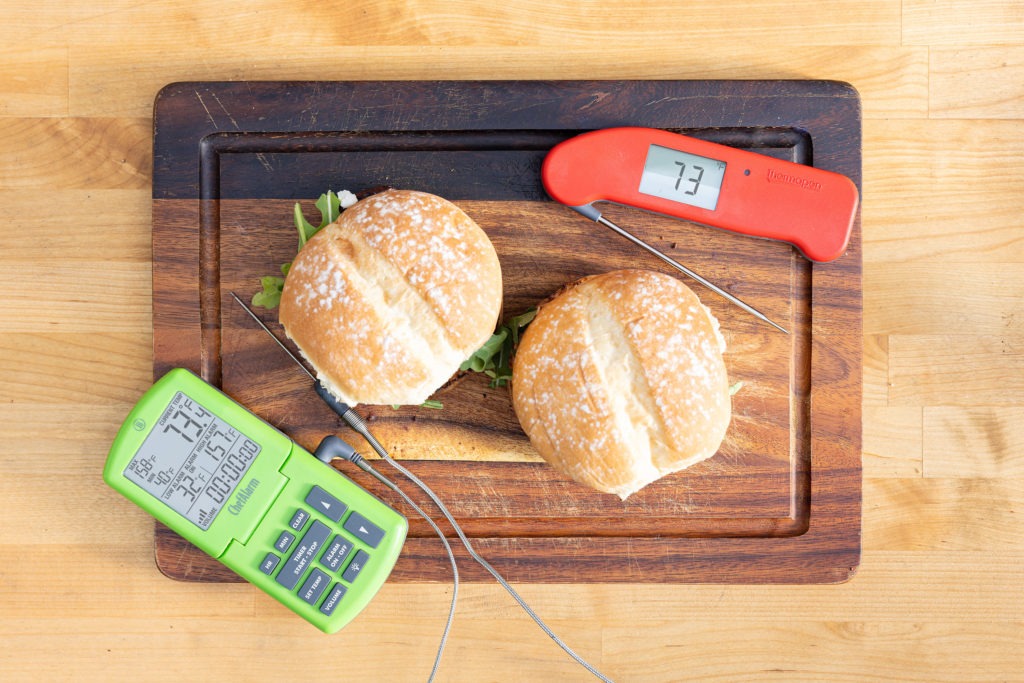
Finding elk (meat)
Sorry, no tips on scouting for elk on a hunt, here! If we’re going to have elk burgers, we need elk meat, and unless you were lucky enough to harvest one last hunt, you’ll need to buy it.
Buying elk meat is getting easier and easier. Yes, you can still get it at specialty butchers, if you have one nearby, but buying it online is getting easier all the time. And you can get excellent quality meat, which is exactly what we want. We got the meat for this cook from Force of Nature meats, a company dedicated to grass-fed game and beef, and it was as terrific as it was easy to get.
So with the procurement roadblock out of the picture, all we need to talk about is the cooking.
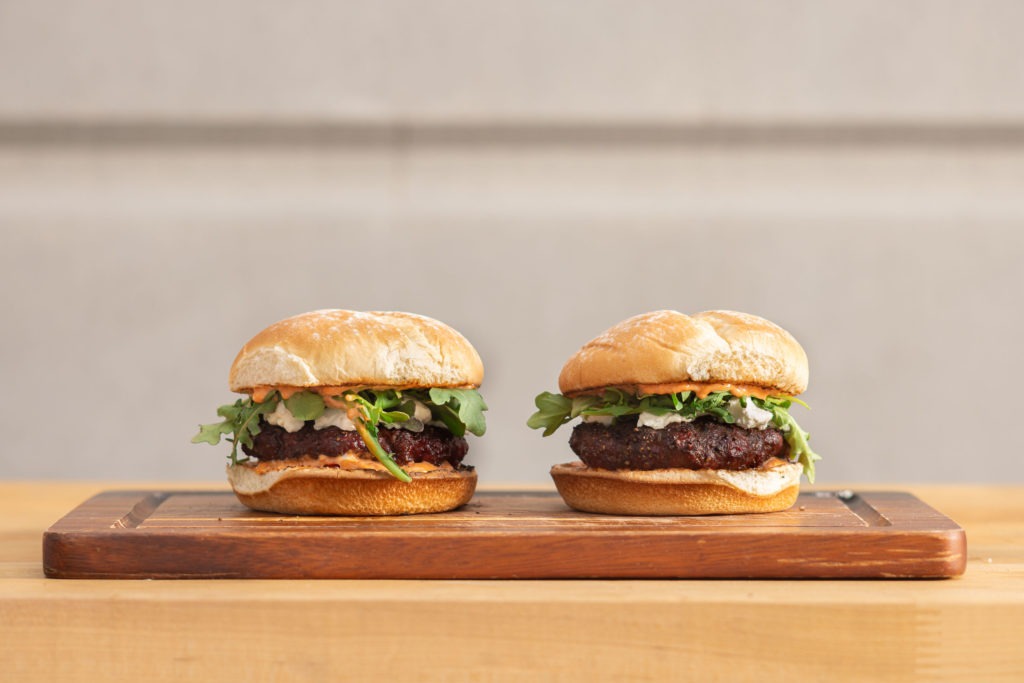
Elk doneness temperatures
In general, herbivorous game, like elk, poses no health problems that are not also present in beef. Omnivorous game (wild boar, bears) can contain trichinella parasites, but there have not been any recorded cases from elk or deer. That being said, we’re still talking about ground meat here, and that means cooking to a higher temperature than we’d want in a steak. To protect your family from foodborne illness, elk burgers must get up to 160°F (71°C) to be considered safe.
Cooking elk burgers well
We could just plop our elk patties on a hot grill and start them to cooking, but they’ll end up dry. As we discussed in our post about grilling burgers the right way, the answer is a two-stage cooking process.
Setting up our grill for two-zone cooking gives us the control we need to cook our burgers just right. We start by slowly cooking the burgers on the indirect-heat side of the grill. Once they reach a temperature about 30°F (17°C) below our pull temp, as tracked on a leave-in probe thermometer like ChefAlarm®, we move the patties to the direct-heat side to finish cooking and pick up that delicious flame-kissed seared flavor. This more controlled approach helps prevent overshooting the final temp and results in juicier burgers.
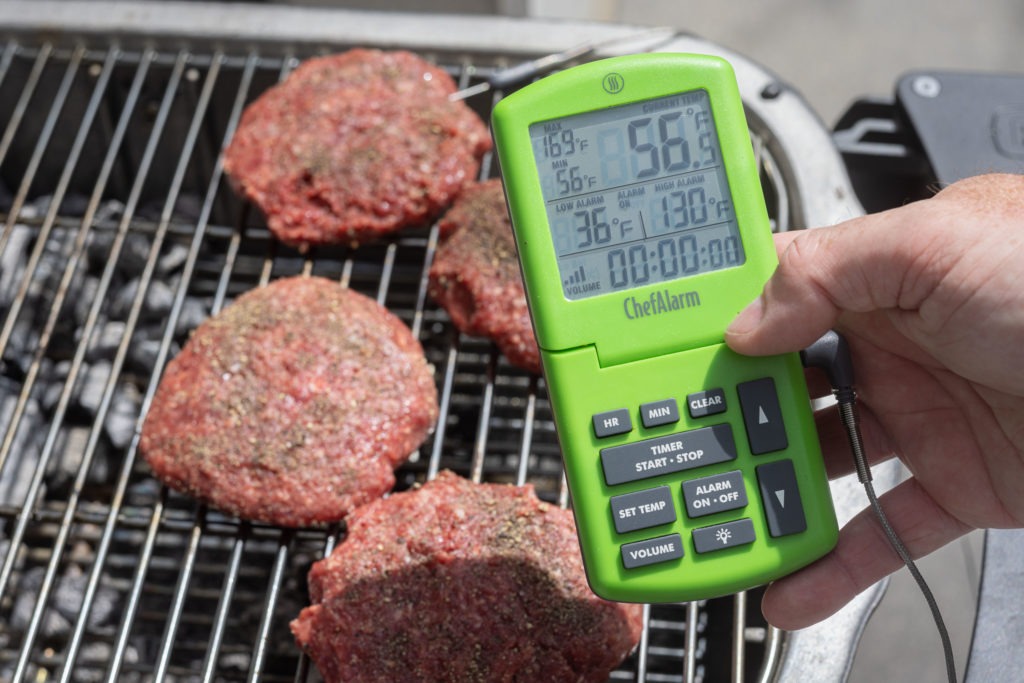
Pull temp for game burgers
We know we need a final serving temperature needs to be 160°F (71°C), but that doesn’t mean we need to keep them on the heat until they get there! The searing process will pump a lot of heat into the outside of the burger. When we remove the patties from the grill that heat will continue to work its way into the burger. Yep, carryover cooking.
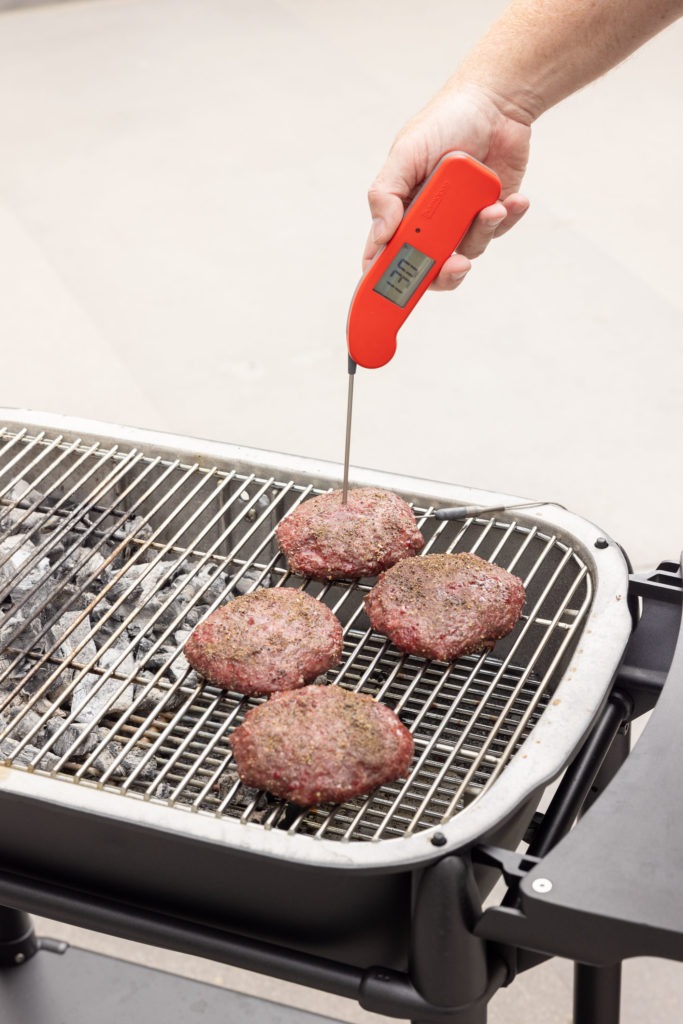
Carryover is more pronounced in situations with high mass and high heat. Grill-seared burgers have high heat but low mass, so there is some carryover, but not tons. I recommend pulling the patties at 157°F (69°C), they’ll easily climb the few degrees to the correct doneness temperature. And if you wait until the burgers are 160°F (71°C), they’ll overcook in the carryover. Pulling a few degrees short means burgers that are just that much juicier. Using Thermapen® ONE to temp the burgers throughout the sear will assure that you don’t overcook them. The fast readings will give you an accurate result faster while shortening the time your hand has to spend over the fire.
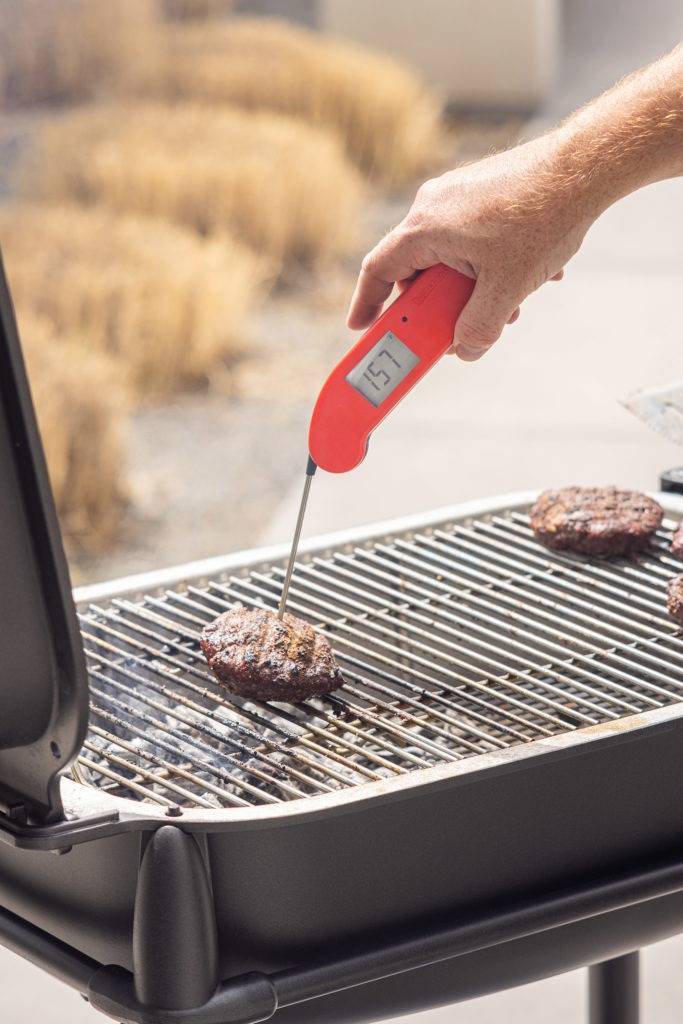
Seasoning elk burgers
The gaminess of elk allows for aggressive seasoning. I like salt and plenty of pepper to season the patties. (Fresh ground black pepper is the best counterpoint to gaminess that I know.) You can use more aggressive seasonings if you like, but good-old S&P is hard to beat.
When dressing the elk burgers, they are a blank canvas. We used fresh goat’s cheese (chevre), a mayo/harissa spread, and fresh arugula. This combination of bold flavors stands up to the flavor of the elk without eclipsing it, and the light spiciness of the harissa mayo is so pleasant in this application.
You don’t have to hunt to experience the joy of elk burgers. Get some ground elk from a hunter friend, pick it up at a local shop, or order it online and give these a shot. Game tastes so different, yet so familiar, and it’s a great way to reawaken our taste buds to what makes meat so tasty—this isn’t just the same fast-food beef burger we’ve eaten so many hundreds of times. This is wild, fresh, new, and invigorating. And if you keep from overcooking it by two-zone cooking it and accounting for carryover, you’ll enjoy them even more. Give it a try, and until then, happy cooking!
Print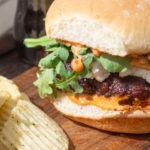
Grilled Elk Burgers Recipe: Temps to Know
Description
Grilled elk burgers. We bought our elk meat from Forceofnature.com.
Ingredients
- 28–32 oz ground elk
- Kosher salt and freshly ground black pepper
- Hamburger buns
- 1/3 C mayonnaise
- 2 Tbsp harissa
- 2 oz fresh goat cheese
- fresh baby arugula
Instructions
- Set up your grill for two-zone cooking and preheat it.
- Portion the elk into patties, about 7–8 oz each.
- Season the elk patties well on both sides with salt and plenty of black pepper.
- Place the patties on the grill in the indirect-cooking zone. Insert the probe from a ChefAlarm into one of the burgers. (We used the optional 2.5″ needle probe.)
- Set the high-temp alarm for 130°F (54°C). Close the lid on your grill and cook.
- When the high-temp alarm sounds, move the burgers to the direct-heat cooking zone.
- Cook, turning every 40 seconds or so until nicely seared and the internal temperature reads 157°F (69°C) on your Thermapen ONE.
- Remove the burgers to a platter and allow them to rest. Toast the buns on the grill.
- Mix the harissa and mayo together until well blended.
- Spread mayo/harissa on the bottom of each bun, top each with a burger, top with crumbles, then arugula, then the top bun which is also spread with more of the sauce.
- Serve with cold drinks and enjoy!
Shop now for products used in this post:


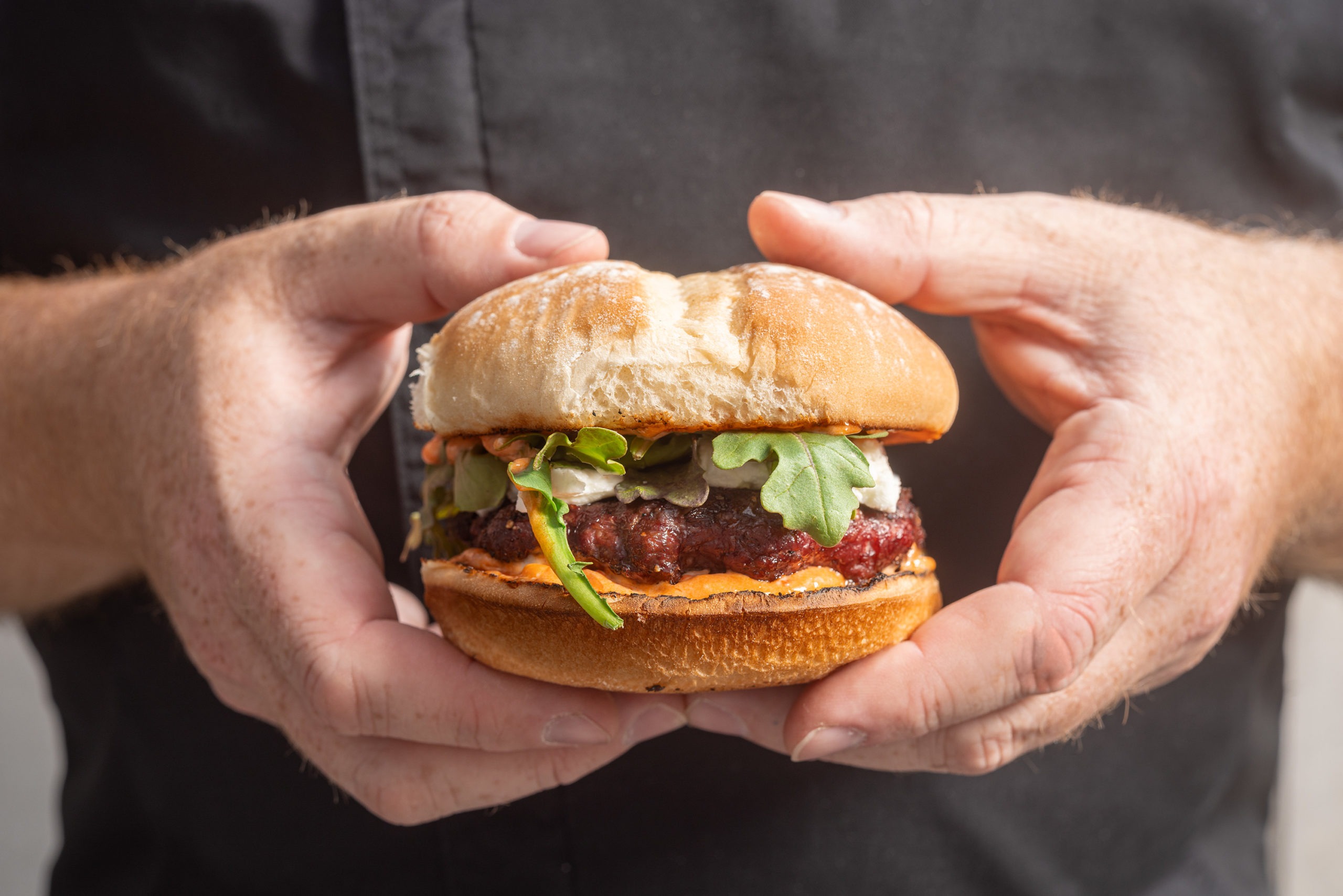
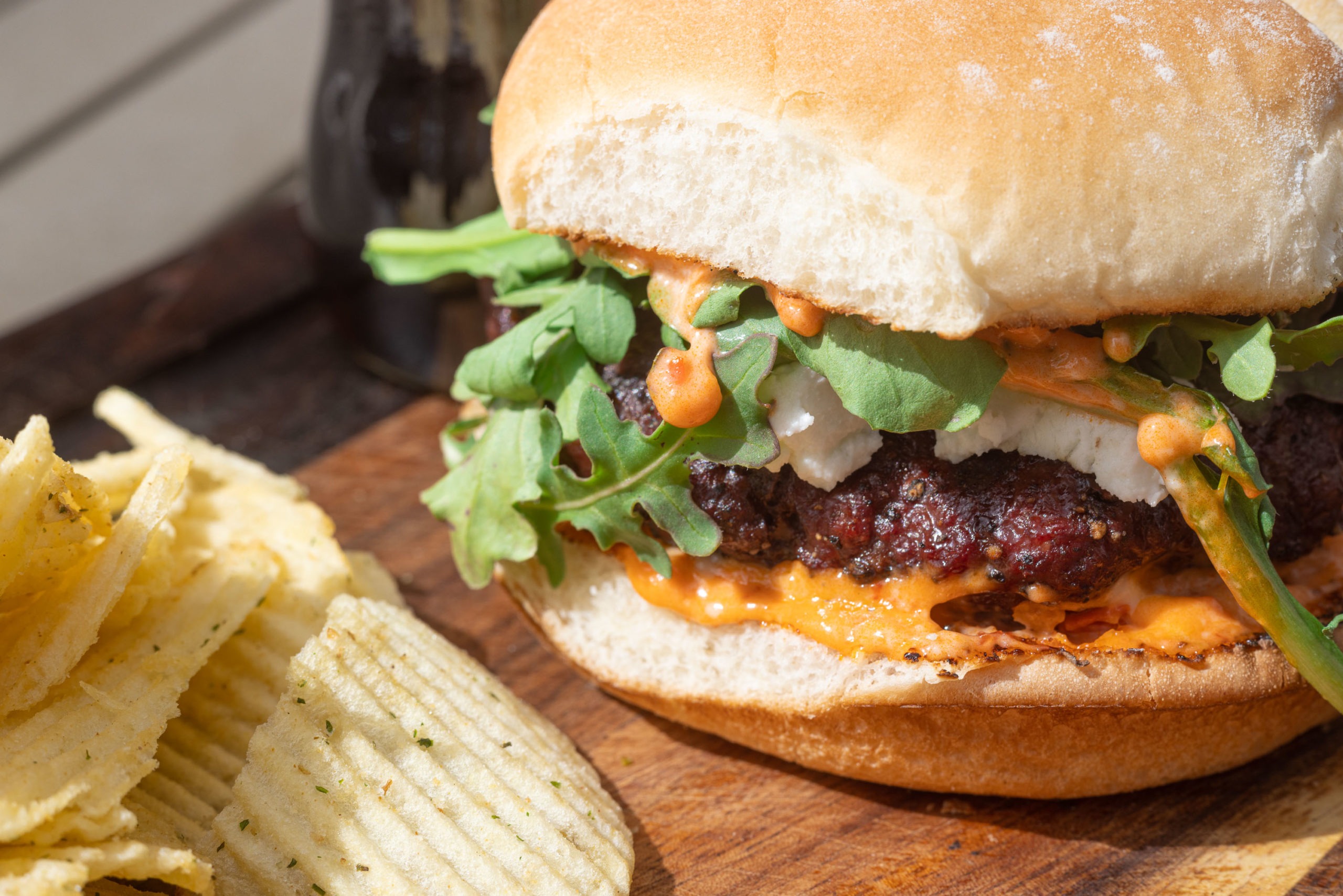
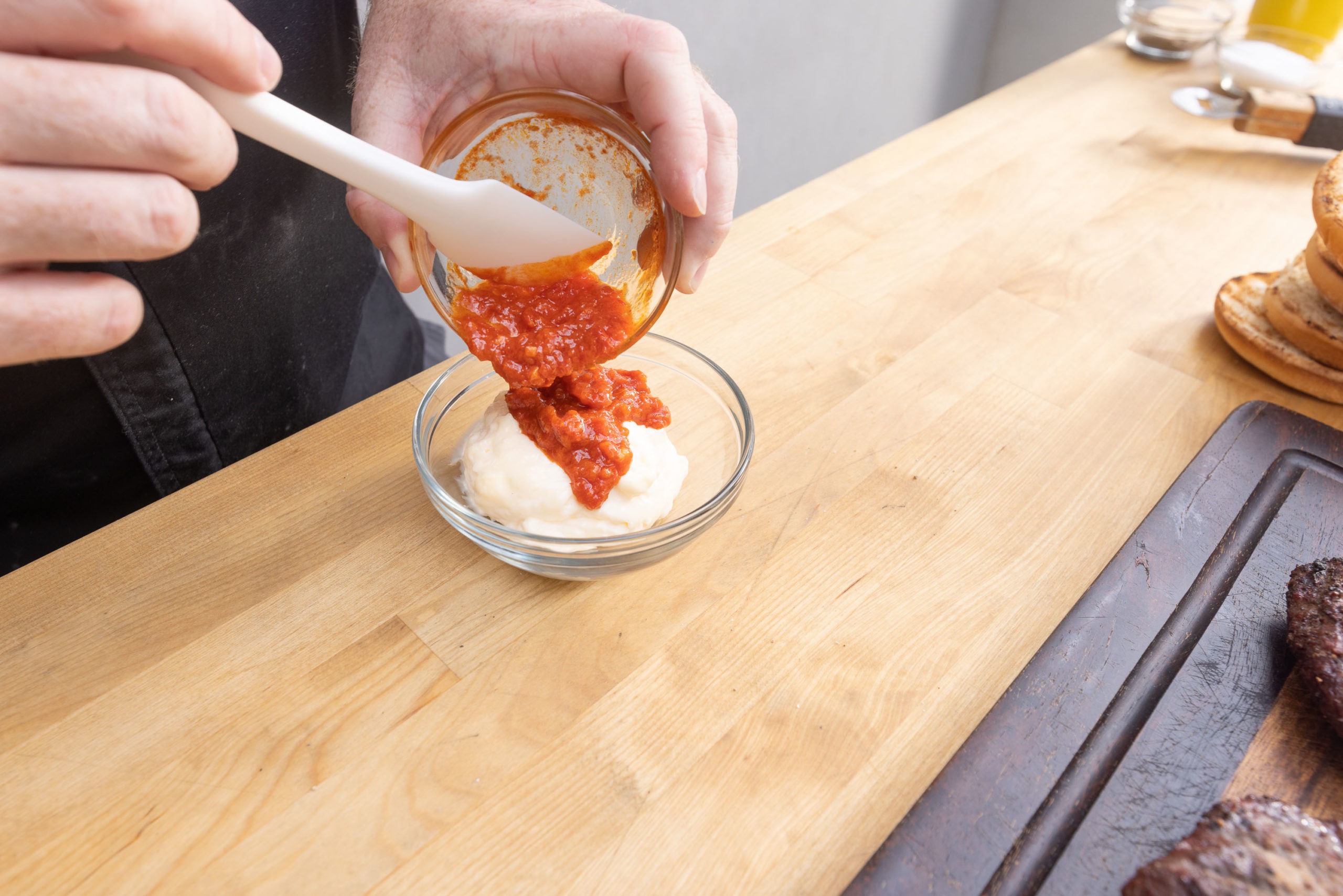
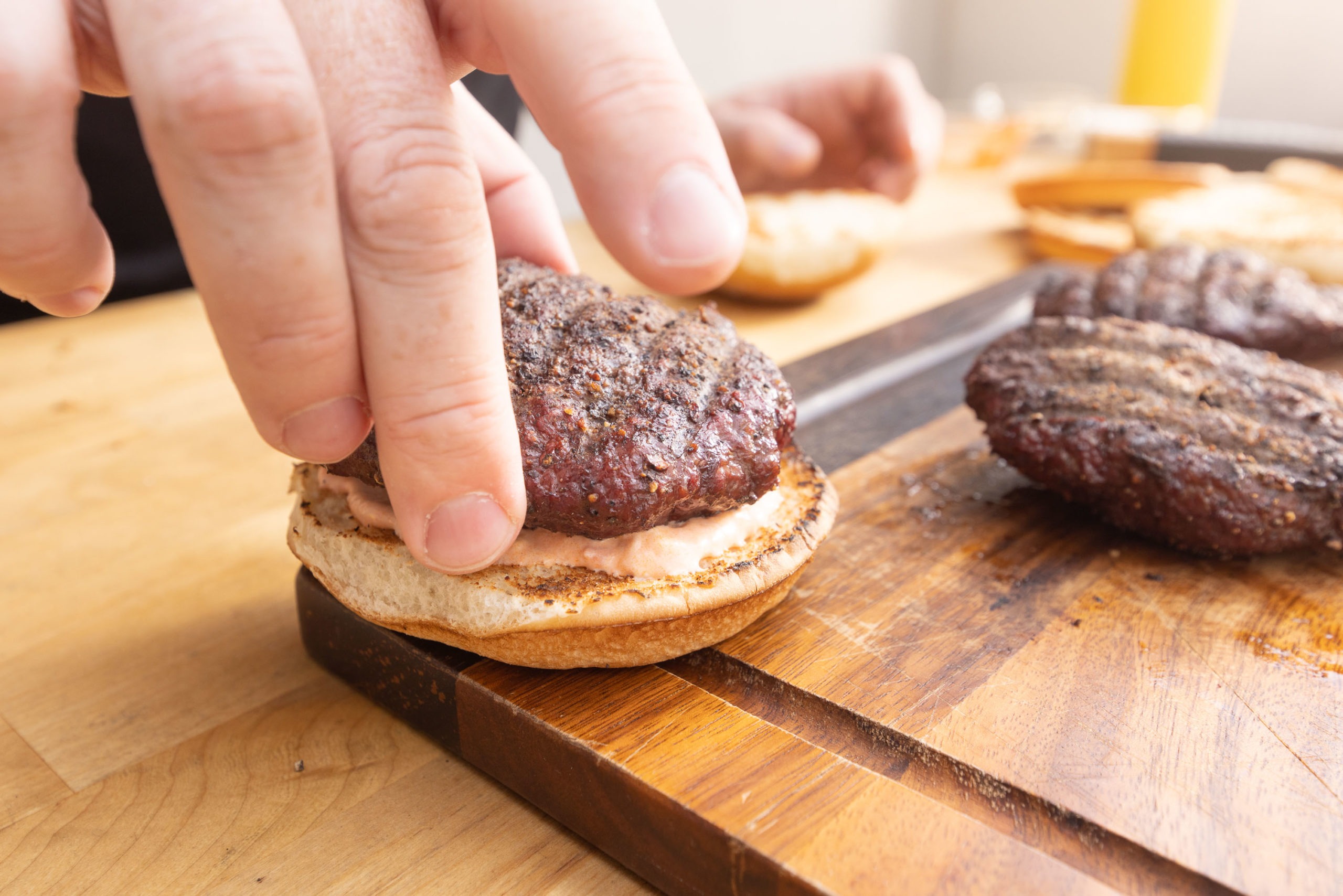
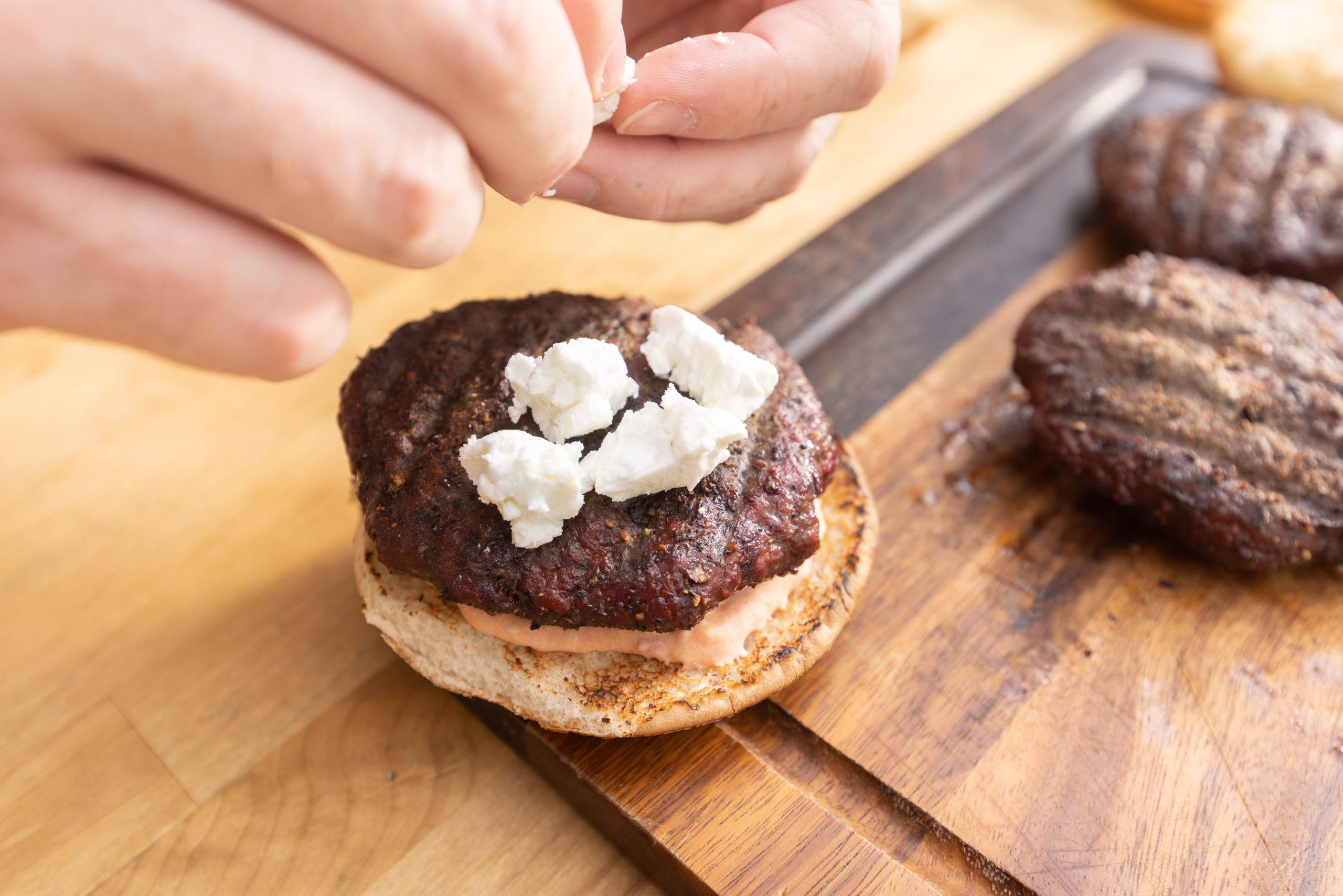
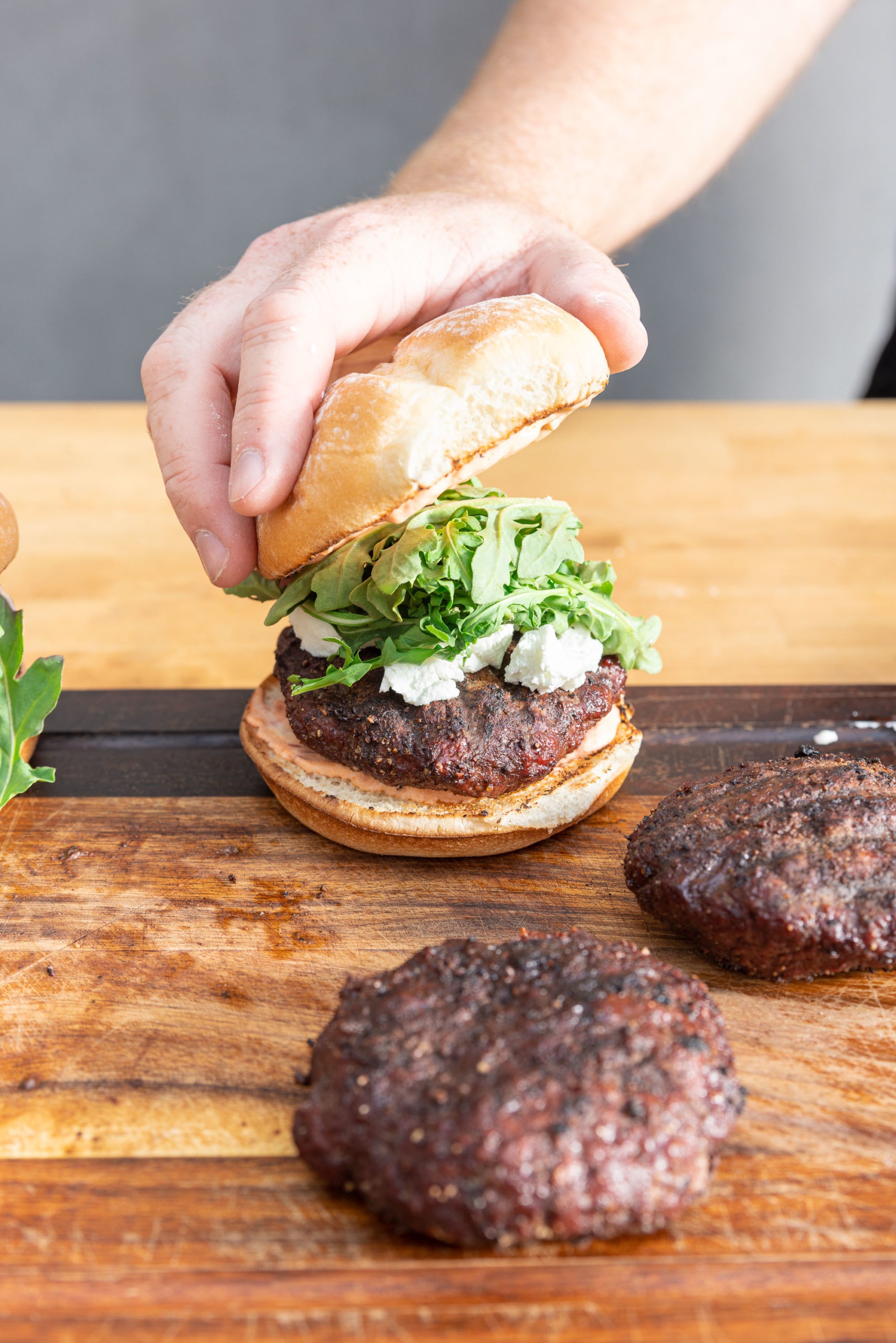
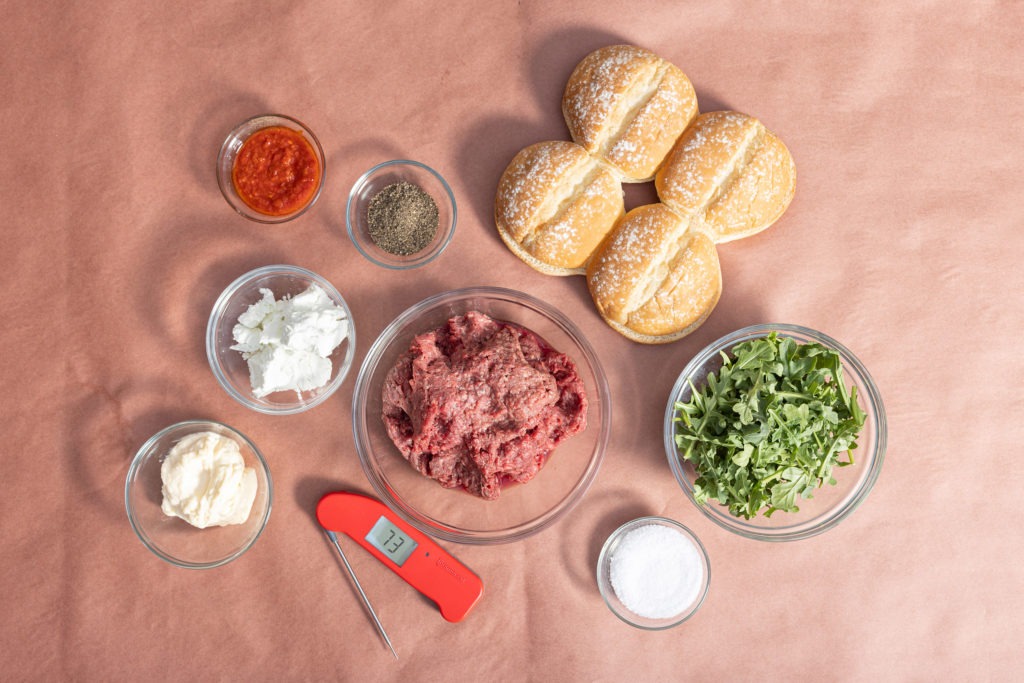
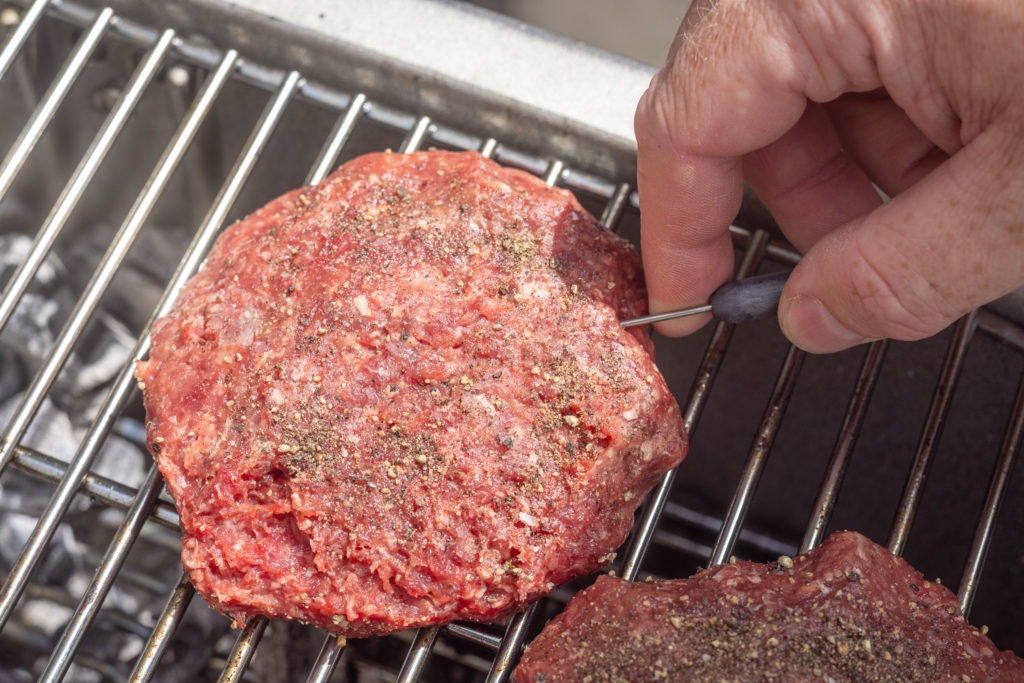
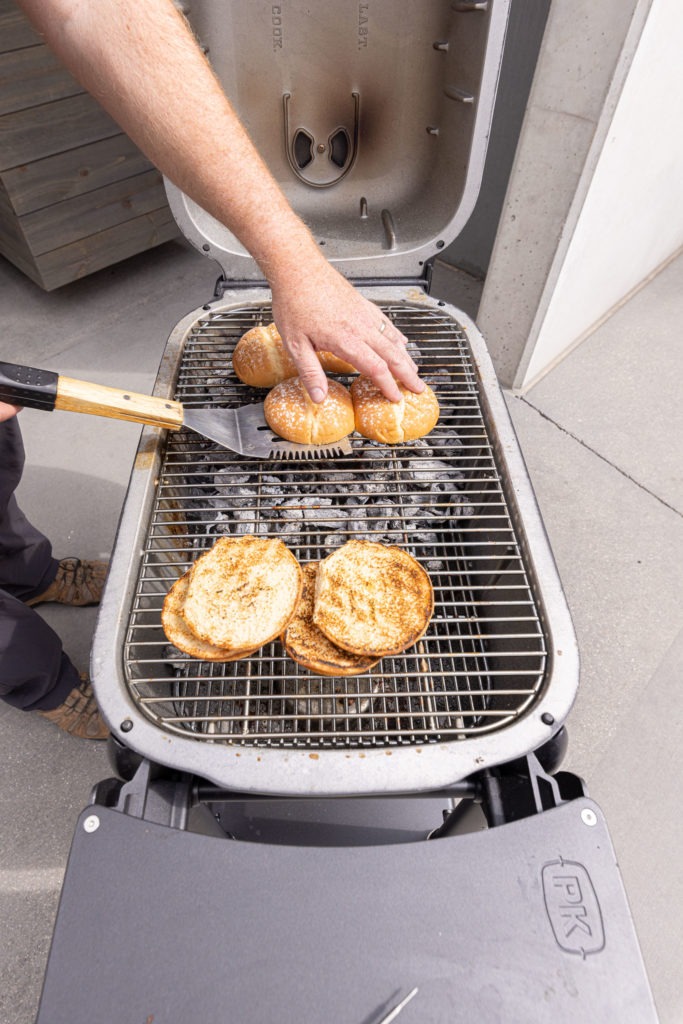
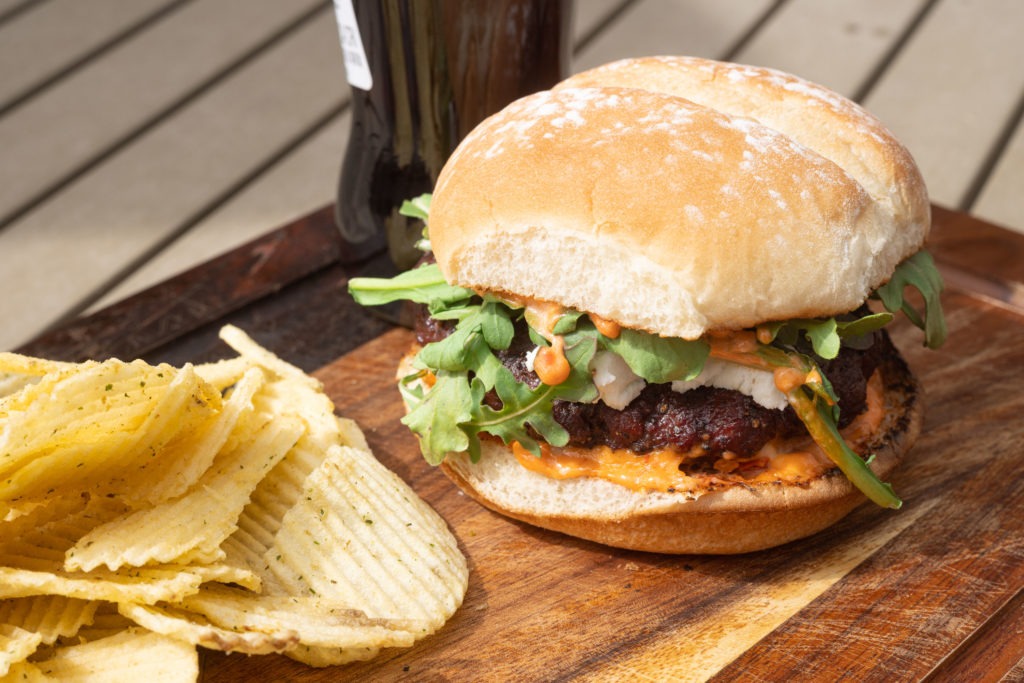

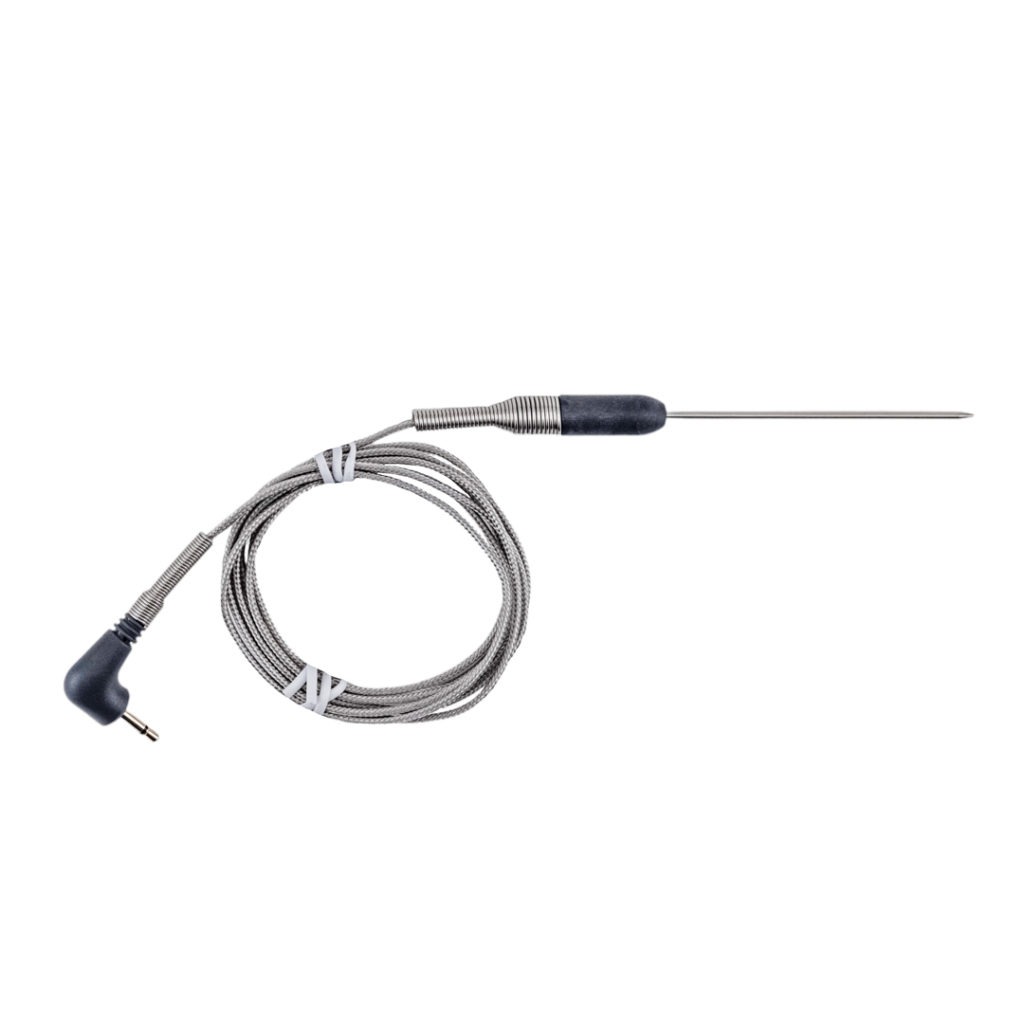

160 might be required for elk grown on a ranch that could come in contact with salmonella, but as a hunter who harvests free-range organic elk and carefully processes the meat myself, I never cook my burgers past 140.
I’m sorry you’ve had a bad experience with elk meat being ‘gamey.’ Yes, it’s different than beef, primarily due to the animal’s diet, but a properly cared-for elk carcass will yield very tasty meat that’s not in the least gamey. When harvesting an elk, deer, moose, or any other game critter, getting the meat cool quickly is essential. I cringe whenever I see someone bringing an elk to the processor with the hide still on. That hide and hair will keep an animal alive and warm during wicked-cold winters, so naturally, it will keep the meat warm on a nice fall afternoon. That warmth leads to bacterial growth which in turn leads to the gamey flavor many disdain. A clean, quickly cooled elk will become excellent fare that many will not even recognize as wild game, because it’s not rotten/gamey.
So you’re saying temperature matters? I love it!
Temperature matters? Of course it does! Check it early, check it often, and check it with your Thermapen!